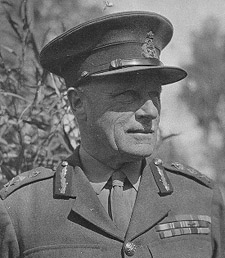
General Sir Edward Pellew Quinan was a British Army commander during the Second World War. In the early part of his career, he was involved in Indian Army campaigns in Afghanistan and Waziristan on the North West Frontier of the Indian Empire, in the days of the British Raj. During the First World War he served with the Indian Army forces in France and Mesopotamia, and was wounded. During the Second World War, Quinan commanded the British and Indian Army forces in the Anglo-Iraqi War, the Syria–Lebanon campaign, and the Anglo-Soviet invasion of Iran. He continued serving in the Middle East until 1943, when he returned to India to command the North West Army, but retired later the same year due to a downgrading of his fitness status.

The Arctic convoys of World War II were oceangoing convoys which sailed from the United Kingdom, Iceland, and North America to northern ports in the Soviet Union – primarily Arkhangelsk (Archangel) and Murmansk in Russia. There were 78 convoys between August 1941 and May 1945, sailing via several seas of the Atlantic and Arctic oceans, with periods with no sailings during several months in 1942, and in the summers of 1943 and 1944.
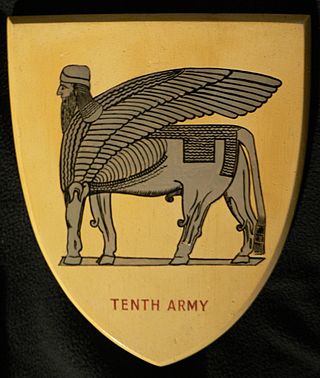
The Tenth Army was a field army of the British Army during the Second World War. It was created in Iraq and formed from the major part of "Paiforce". It was active between 1942 and 1943, and was then disbanded.

The Trans-Iranian Railway was a major railway building project started in Pahlavi Iran in 1927 and completed in 1938, under the direction of the then-Iranian monarch Reza Shah. It was entirely built with indigenous capital, and links the capital Tehran with Bandar Shahpur on the Persian Gulf in the south and Bandar Shah on the Caspian Sea in the north, via Ahvaz and Ghom. In 1961, under Reza Shah's son Mohammad Reza Pahlavi, it was extended from Bandar Shah to a new terminus in Gorgan. During the land reforms of Mohammad Reza Pahlavi in 1963, as part of the "White Revolution", the Trans-Iranian railway was extended to link Tehran to Mashhad, Tabriz and Isfahan.

Middle East Command, later Middle East Land Forces, was a British Army Command established prior to the Second World War in Egypt. Its primary role was to command British land forces and co-ordinate with the relevant naval and air commands to defend British interests in the Middle East and eastern Mediterranean region.
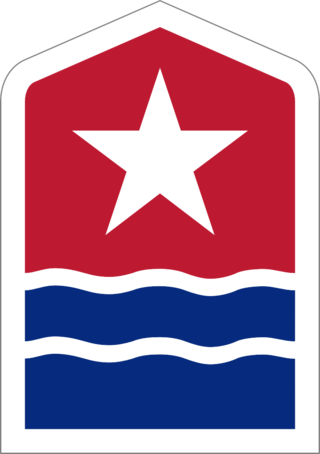
United States Army Forces in the Middle East(USAFIME) was a unified United States Army command during World War II established in August, 1942 by order of General George C. Marshall, the Chief of Staff of the United States Army, to oversee the Egypt-Libya campaign.
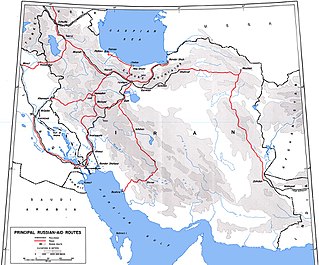
The Persian Corridor was a supply route through Iran into Soviet Azerbaijan by which British aid and American Lend-Lease supplies were transferred to the Soviet Union during World War II. Of the 17.5 million long tons of US Lend-Lease aid provided to the Soviet Union, 7.9 million long tons (45%) were sent through Iran.
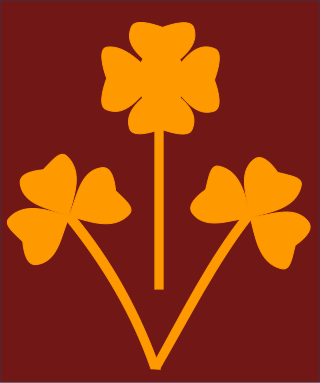
The 8th Mountain Division was raised as the 7th Indian Infantry division of the British Indian Army. It is now part of the Indian Army and specialises in mountain warfare.
The military history of Iran has been relatively well-documented, with thousands of years' worth of recorded history. Largely credited to its historically unchanged geographical and geopolitical condition, the modern-day Islamic Republic of Iran has had a long and checkered military culture and history; ranging from triumphant and unchallenged ancient military supremacy, affording effective superpower status for its time; to a series of near-catastrophic defeats, most notably including the ancient Greek kingdom of Macedon as well as the Asiatic nomadic tribes at the northeastern boundary of the lands traditionally home to the Iranian peoples.
Abadan International Airport is situated 12 kilometers away from the city of Abadan, Iran.
Project Cedar was a World War II project to deliver short-range aircraft from the United States to the USSR via Abadan, Iran in the Persian Gulf.

Operation Fath-ol-Mobin was a major Iranian military operation conducted during the Iran–Iraq War, in March 1982. The operation was led by Lt. General Ali Sayad Shirazi, and was conducted in four phases.

The Persia and Iraq Command was a command of the British Army established during the Second World War in September 1942 in Baghdad. Its primary role was to secure from land and air attack the oilfields and oil installations in Persia and Iraq. Its further role was to ensure the transport of supplies from Persian Gulf ports through Iraq and Persia to the Soviet Union.
Oskar Ritter von Niedermayer was a German General, professor and a German spy. Sometimes referred to as the German Lawrence, Niedermayer is remembered for having led the 1915–1916 Persian and Indo-German-Turkish mission to Afghanistan and Persia during World War I in an endeavor to incite the Emir Habibullah Khan to attack British India, as a part of the Persian and Hindu German Conspiracy as an adjunct to the German War effort. Between the World Wars, Niedermayer was associated with the Universities of Munich and Berlin.

The United States Army Central, formerly the Third United States Army, commonly referred to as the Third Army and as ARCENT, is a military formation of the United States Army that saw service in World War I and World War II, in the 1991 Gulf War, and in the coalition occupation of Iraq. It is best known for its campaigns in World War II under the command of General George S. Patton.

The Anglo-Soviet invasion of Iran or Anglo-Soviet invasion of Persia was the joint invasion of the neutral Imperial State of Iran by the United Kingdom and the Soviet Union in August 1941. The two powers announced that they would stay until six months after the end of the war with their enemy Nazi Germany, which turned out to be 2 March 1946. On that date the British began to withdraw, but the Soviet Union delayed until May, citing "threats to Soviet security".
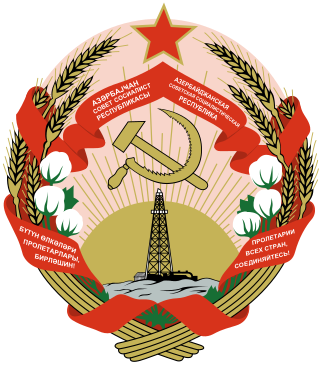
The Azerbaijan Soviet Socialist Republic entered World War II with the Soviet Union after the German declaration of war on June 22, 1941. Azerbaijan's oilfields were enticing to the Germans due to the USSR's heavy dependency on Caucasus oil – setting the scene for German campaigns attempting to capture and seize the oilfields in Baku during the Battle of the Caucasus. Azerbaijan’s oil was very decisive for Soviet victory. More than 600,000 people from Azerbaijan were conscripted to the Workers’ and Peasants’ Red Army during World War II from 1941 to 1945.

Pahlavi Iran, officially the Imperial State of Persia until 1935 and the Imperial State of Iran from 1935 to 1979, was the Iranian state under the rule of the Pahlavi dynasty. The Pahlavi dynasty was created in 1925 and lasted until 1979, when it was ousted as part of the Islamic Revolution, which ended Iran's continuous monarchy and established the current Islamic Republic of Iran.
The Iranian famine of 1942–1943 refers to a period of starvation that took place in Iran, which was under the rule of the Pahlavi dynasty. Iran at the time was occupied by the United Kingdom and Soviet Union despite being a neutral country in the Second World War.
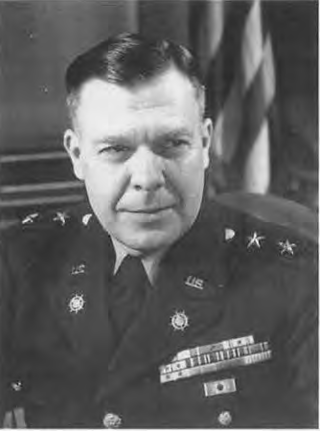
Paul Frailey Yount was a United States Army general who served in World War II and the Korean War. He was the Chief of the United States Army Transportation Corps from 1954 to 1958.

















